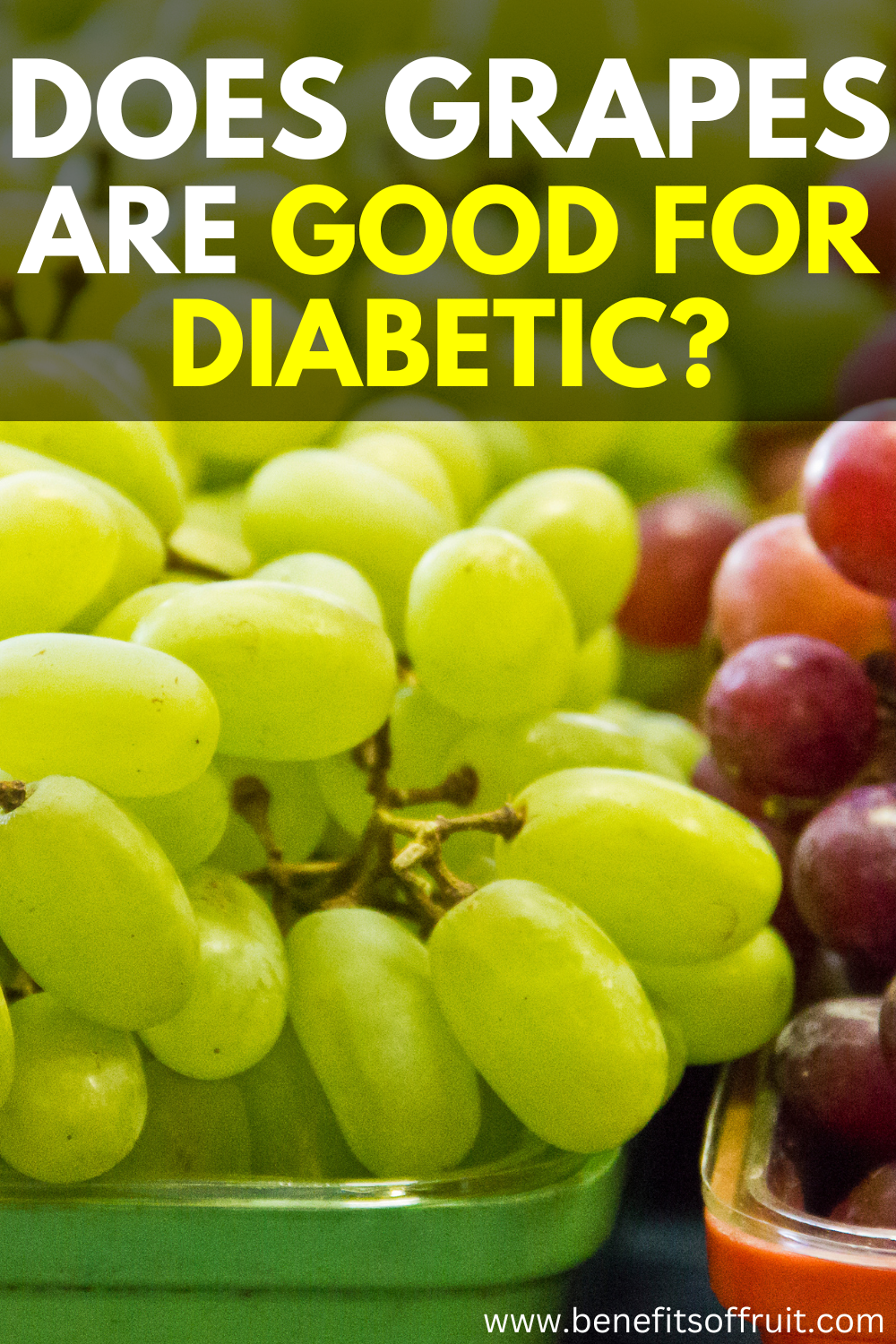Diabetes is a chronic condition characterized by high blood glucose levels resulting from the body’s inability to produce or use insulin effectively. The most common forms of diabetes are Type 1, an autoimmune condition, and Type 2, often associated with lifestyle factors. Globally, diabetes affects millions of people, with Type 2 being the most prevalent. Proper management of the condition, including diet regulation, is crucial in preventing complications and ensuring a good quality of life.
Role of Fruits in Diabetes Management
Fruits are an essential part of a healthy diet due to their vitamins, minerals, fiber, and antioxidants. For diabetics, the natural sugars and carbohydrates in fruits require careful consideration. Understanding the glycemic impact of different fruits helps diabetics make informed dietary choices.
Overview of Grapes as a Fruit
Grapes are small, sweet berries that grow in clusters and are available in various colors like green, red, and purple. They are known for their nutritional benefits and high water content. This article explores whether diabetics can safely include grapes in their diet, considering the fruit’s nutritional profile and impact on blood sugar levels.
Nutritional Profile of Grapes
Macronutrient Composition Grapes are primarily composed of water and carbohydrates. A cup of grapes (approximately 151 grams) contains around 104 calories, 27 grams of carbohydrates, and about 1.4 grams of dietary fiber. The fiber content helps moderate the blood sugar impact of the natural sugars present in grapes, while also aiding in digestion.
Micronutrient Composition
Grapes are rich in vitamins and minerals, notably vitamin C, which supports the immune system, and vitamin K, which plays a role in bone health. They also contain potassium, a mineral that helps regulate blood pressure. Additionally, grapes are known for their antioxidant content, particularly resveratrol and flavonoids, which contribute to cardiovascular health.
Grapes and Their Glycemic Index
Understanding Glycemic Index (GI) The glycemic index (GI) is a ranking system that measures how quickly foods raise blood sugar levels. Foods with a high GI (70 or above) can cause a rapid increase in blood sugar, while those with a low GI (55 or below) produce a gradual rise. For diabetics, understanding the GI of foods is essential for managing blood sugar levels effectively.
Impact of Grapes on Blood Sugar Levels Grapes have a GI score of around 53, placing them on the lower end of the moderate GI range. However, their glycemic load (GL), which factors in portion size, is relatively low, meaning that moderate consumption of grapes is unlikely to cause significant blood sugar spikes in most individuals. Studies indicate that consuming grapes in reasonable portions can be part of a balanced diet for diabetics, provided that other aspects of the diet are managed effectively.
Grapes and Diabetes: The Good and the Bad
Potential Benefits for Diabetes Patients
- Antioxidant Properties and Cardiovascular Health: Grapes are rich in antioxidants like resveratrol, which have been shown to improve cardiovascular health by reducing inflammation and protecting against oxidative stress.
- Role of Resveratrol in Improving Insulin Sensitivity: Resveratrol has also been linked to improved insulin sensitivity, which is crucial for diabetics. By enhancing the body’s ability to use insulin, resveratrol may help in managing blood sugar levels.
- Impact of Fiber on Blood Sugar Regulation: The fiber in grapes can slow down the absorption of sugar into the bloodstream, reducing the likelihood of blood sugar spikes.
Potential Risks for Diabetes Patients
- High Sugar Content and Risk of Blood Sugar Spikes: Despite their benefits, grapes have a relatively high sugar content, which can cause blood sugar spikes if consumed in large quantities.
- Portion Control and Moderation: For diabetics, portion control is essential when consuming grapes. Eating them in moderation and monitoring blood sugar levels is crucial to prevent adverse effects.
- Individual Variation in Blood Glucose Response: Individual responses to grapes can vary. Some diabetics may experience significant blood sugar increases even with small portions, emphasizing the need for personalized dietary management.
Guidelines for Including Grapes in a Diabetic Diet
Portion Control and Serving Size To include grapes in a diabetic diet safely, it’s crucial to adhere to recommended portion sizes. A serving size of around 15 grapes or half a cup can provide the nutritional benefits without significantly impacting blood sugar levels. Incorporating them into a balanced meal that includes protein and healthy fats can further mitigate potential spikes.
Monitoring Blood Sugar Response Monitoring blood glucose levels after consuming grapes is important for understanding how they affect an individual diabetic. Based on the results, diabetics can adjust their intake or pair grapes with other foods to reduce their glycemic impact.
Pairing with Low-GI Foods Combining grapes with low-GI foods, such as nuts or yogurt, can help balance their blood sugar impact. These combinations provide additional nutrients and slow down the absorption of sugar, making grapes a viable snack option for diabetics.
Alternatives to Grapes for Diabetics
Low-GI Fruits with Similar Nutritional Benefits
Diabetics looking for low-GI alternatives to grapes can consider:
- Berries: Strawberries, blueberries, and raspberries are low-GI fruits rich in antioxidants and vitamins.
- Cherries: Fresh cherries have a low GI and offer similar antioxidant benefits as grapes.
- Apples: Apples contain fiber and have a relatively low GI, making them a suitable fruit for diabetics.
- Citrus Fruits: Oranges, grapefruits, and lemons are low in GI and high in vitamin C, beneficial for diabetics.
Strategies for Satisfying Sweet Cravings
To satisfy sweet cravings, diabetics can opt for:
- Natural Sweeteners: Stevia or monk fruit extract can provide sweetness without impacting blood sugar.
- Diabetic-Friendly Desserts: Recipes that incorporate low-GI fruits or sugar substitutes can help satisfy cravings without spiking blood sugar.
- Variety in Diet: Including a range of low-GI fruits and snacks ensures diabetics enjoy a diverse diet without compromising blood sugar control.
Conclusion
